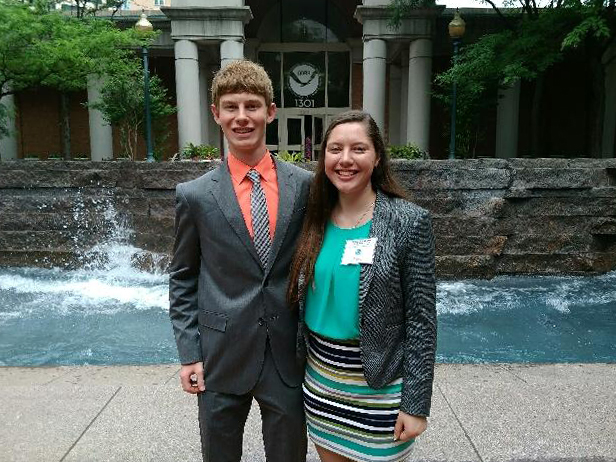
Bryan Petersen, a junior applied climate major in the School of Natural Resources, was among 150 college students across the nation to be named an Ernest F. Hollings Undergraduate Scholar in 2018. Madeline Diedrichsen, junior metrology, climatology and mathematics major in the Earth and Atmospheric Sciences department, joins him in helping form the second largest NOAA undergraduate scholarship class.
“It was an honor to receive this prestigious award,” Petersen said. “I am extremely grateful for all the support I have received from my professors and various faculty members in the School of Natural Resources and Department of Earth and Atmospheric Sciences. It is because of their support that I was able to receive this scholarship.”
The Hollings Scholarship recipients receive an academic award of $9,500 per year for two years, as well as a 10-week, full-time, paid summer internship at any NOAA facility nationwide. Scholars receive funding to present their NOAA research projects at up to two national scientific conferences. Students who apply need to be in their second year of undergraduate study and have a minimum 3.0 GPA.
"NOAA welcomes the 2018 undergraduate scholars, an accomplished group of students ready to investigate our changing environment, from forecasting severe storms, to monitoring our climate, to managing the nation’s fisheries, and to restoring our coasts,” said Louisa Koch, the director of National Oceanic and Atmospheric Administration Education in the scholarship announcement. “We are proud to help educate the next generation of scientists, stewards, and educators."
The scholars chosen study at 100 different campuses in 35 U.S. states, as well as the U.S. Virgin Islands. In late May, they attended orientation in Silver Spring, Maryland, where they met their peers as well as NOAA scientists and learned about potential NOAA internship opportunities. The official database of internships will open to Petersen and Diedreichsen on Oct. 1.
Petersen, who hopes to research land and atmospheric interactions, would like to land an internship working on a research project with the Earth Systems Research Laboratory in Boulder, Colorado. No matter where he lands an internship, though, he anticipates it will help him decide on an eventual career path.
“My career intention is to pursue a Ph.D. in meteorology or climatology and ultimately enter academia,” he said. “From my past experiences, I enjoy researching and teaching meteorology or climatology.” But Petersen sees an internship actually doing meteorology and climatology research as the best way to gauge the longevity of that interest.
He is majoring in applied climate science because of his interest in the climate system and its interactions with the other earth systems.
“It is these countless interactions that keep me engaged in the program,” he said. “I enjoy that the Applied Climate Science degree program integrates water science, soil science, and ecology courses with the meteorology courses, which is essential to fully understand the climate system and its interactions.”
The Ernest F. Hollings Undergraduate Scholarship was established in 2005, in honor of Senator Ernest F. Hollings, who was well known for supporting ocean policy and conservation. More than 1,400 students from 300 universities have participated in the program, with 75 percent going on to graduate school. Learn more about the scholarship program.
Shawna Richter-Ryerson, Natural Resources.
NOAA contributed to this report<>